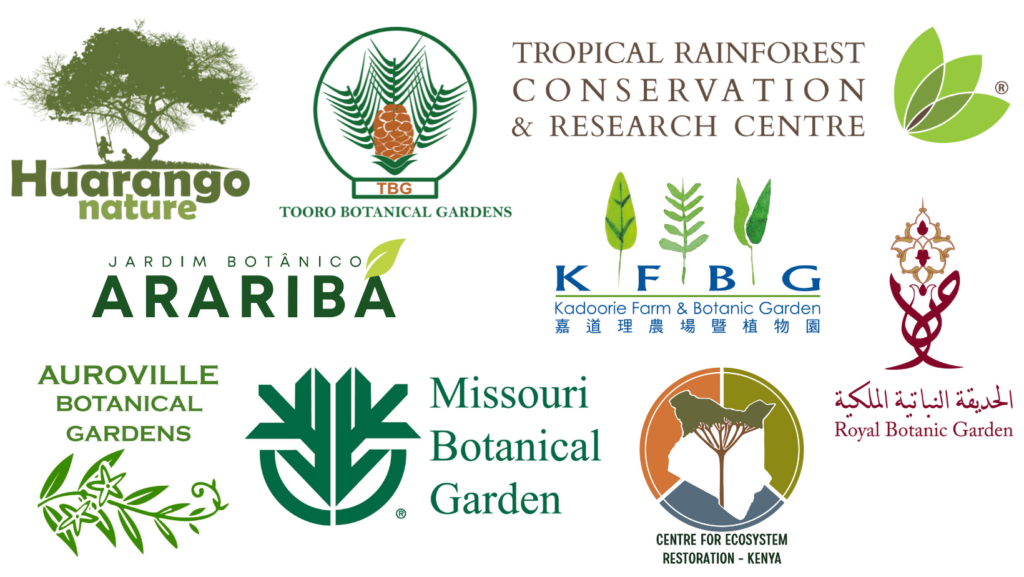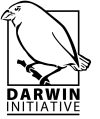An update on the Global Biodiversity Standard for March 2024 – exciting progress happening around the world.
An update from The Global Biodiversity Standard (TGBS) Project Manager
As the Project Manager for The Global Biodiversity Standard, I’m excited to bring you this update, encapsulating our recent progress and future directions. Our presence at COP-28 was a landmark moment, showcasing our assessment methodology and the evolving toolkit of biodiversity data tools. This event was complemented by our inaugural training workshop, which successfully certified our first cohort of trainers and assessors.

We’re immensely grateful for the contributions to our public consultation, with the outcomes set to be shared soon. The feedback is instrumental as we refine our methodology and prepare for the release of our technical manual.
Our network is growing, and we’re actively seeking new hub partners to join our cause. Our combined efforts in advocacy and promotion also continue to gain momentum, significantly bolstered by a new promotional video from PLMR.
Most notably, our first certified assessors are now ready to apply our methodology to real-world sites. We’re eager to engage with anyone interested in certifying a site and invite you to reach out to explore how we can collaborate towards a more biodiverse future.
Thank you for your ongoing support. Together, we’re driving impactful change for biodiversity.
David Bartholomew, Global Biodiversity Standard Project Manager
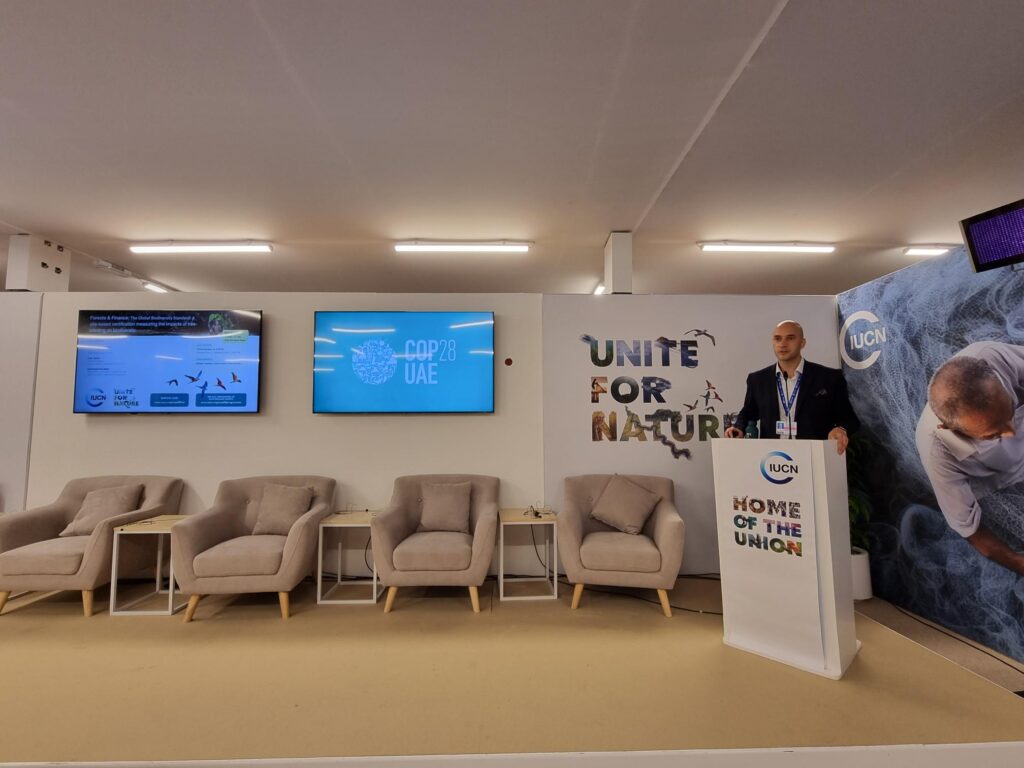
The Global Biodiversity Standard showcased at COP-28 in Dubai, UAE
By David Bartholomew, The Global Biodiversity Standard Project Manager, BGCI
At the recent UNFCCC COP-28 conference in Dubai, UAE, a significant highlight was the showcase of The Global Biodiversity Standard, presented by Prof Alexandre Antonelli from the Royal Botanic Gardens, Kew. This showcase included a presentation of the assessment methodology and the suite of tools being developed to support future assessments. The event was held in the IUCN pavilion and captured the attention of environmentalists and policymakers alike.
In addition to the presentation, attendees were treated to the first-ever viewing of a new promotional video aimed at raising awareness and support for biodiversity conservation efforts worldwide. For more insights, interested parties are encouraged to explore an in-depth news piece from CIFOR-ICRAF and to view Prof Antonelli’s enlightening presentation in full.
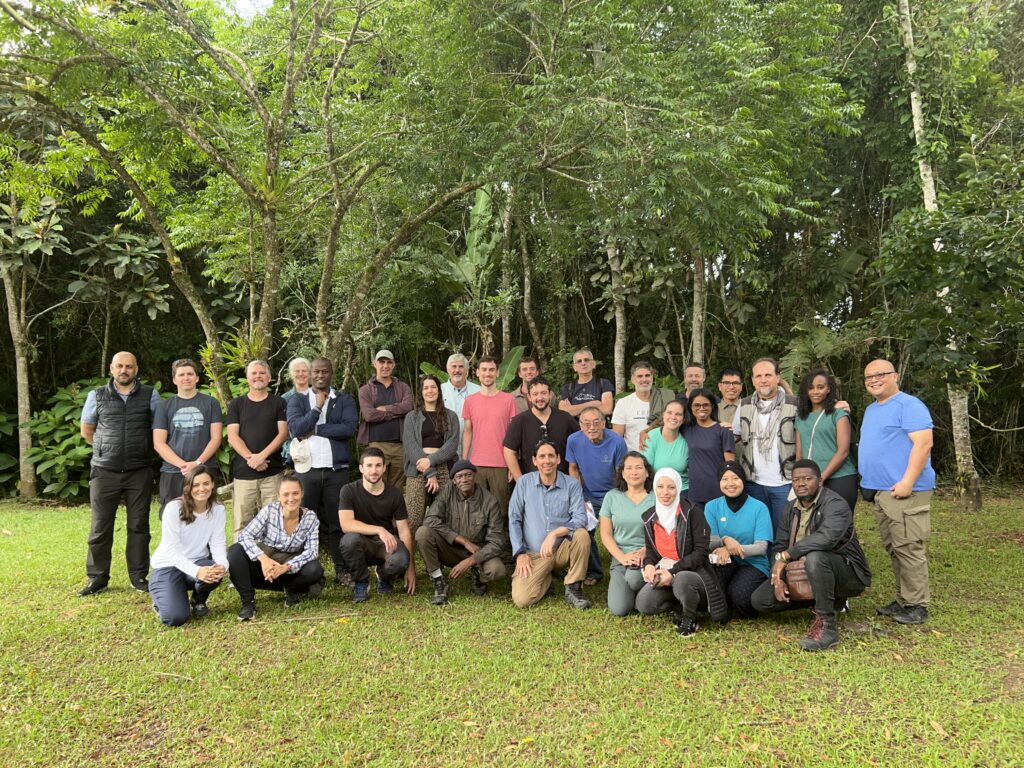
The Global Biodiversity Standard inaugurates first cohort of Trainers and Assessors
By David Bartholomew, The Global Biodiversity Standard Project Manager, BGCI
In a significant leap forward for The Global Biodiversity Standard (TGBS), the inaugural Train the Trainer workshop took place in January. The two-week intensive programme, held at Araribá Botanic Garden in São Paulo, Brazil, aimed at training the first cohort of TGBS trainers and assessors with the tools and knowledge to effectively assess biodiversity change at sites and provide mentoring to drive positive biodiversity outcomes for nature-based solutions.
The workshop, which took place from 22nd January to 2nd February, brought together 20 new trainers from nine countries, representing each of the TGBS hubs. These trainers are now equipped to train an additional 180 assessors over the next 12 months, expanding the reach and impact of the TGBS methodology on a global scale.
Developed by leading environmental organisations, including BGCI, SER, CIFOR-ICRAF, TRAFFIC, Plan Vivo, Reforest’Action, Ecosia, the Royal Botanic Gardens, Kew and our nine hub partners, TGBS is a pioneering certification and mentoring programme designed to enhance biodiversity outcomes in restoration, tree planting, and other nature-based solutions. The workshop covered the full assessment process, teaching participants how to evaluate the biodiversity of sites, build reference models, and use rapid biodiversity assessments and remote sensing to gauge project outcomes.
A key highlight of the training was the emphasis on ecological restoration principles, with participants learning to assess the outcomes of restoration across a range of ecosystem attributes. The workshop also focused on the importance of social benefits in restoration projects, with Plan Vivo and TRAFFIC leading sessions on the TGBS safeguarding protocol and social survey techniques. Understanding stakeholder engagement, benefit distribution, and sustainable economies was underscored as crucial for long-term project success.
The second week of the workshop was dedicated to practical fieldwork skills, including vegetation, beetle, mammal, bird survey techniques, and soil sampling methods. Innovations in biodiversity monitoring technology were also a focus, with hands-on training in drone usage by Bioflore and an introduction to bioacoustic technology by Rainforest Connection.
The workshop concluded with a practical and written exam, resulting in the certification of the first cohort of TGBS trainers and assessors. This milestone marks a significant advancement in the global effort to preserve and enhance biodiversity.
Parallel discussions among the technical partners of the TGBS also took place, covering crucial topics such as data tools, PR and marketing strategies, safeguarding procedures, and stakeholder mapping. These discussions are essential for the successful launch and implementation of TGBS.
The success of the Train the Trainer workshop signifies a promising start for TGBS, laying the groundwork for a more biodiverse future. As these newly certified trainers begin to impart their knowledge and skills across the world, the vision of a world where nature-based solutions recover biodiversity worldwide becomes ever more attainable.
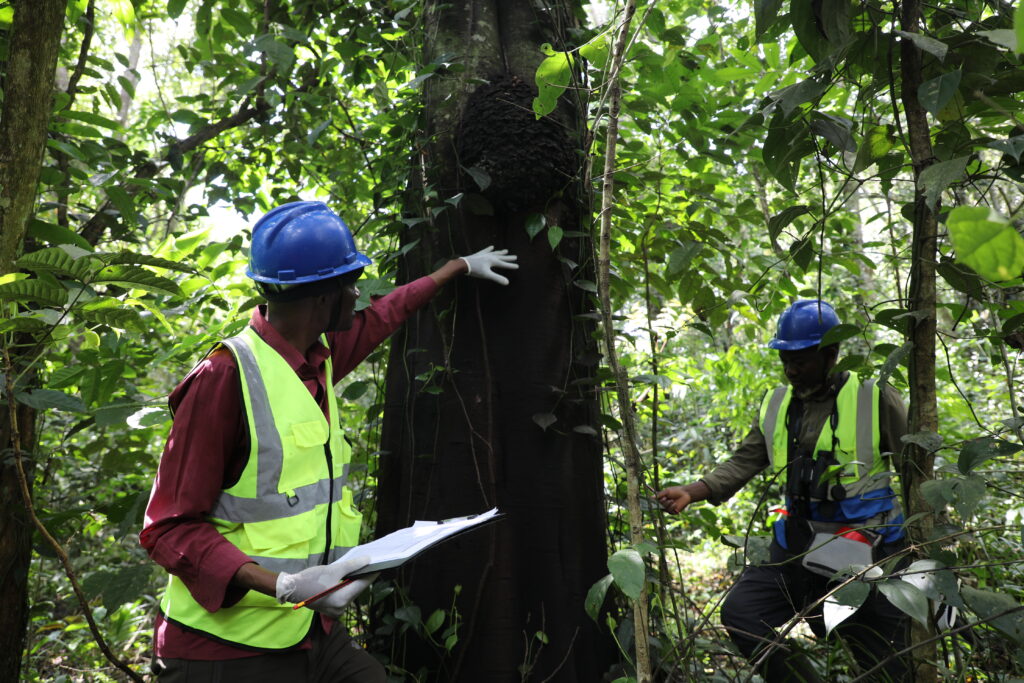
Promoting collaborative action for The Global Biodiversity Standard in Uganda
By Mutegeki Alislam Said Musa, Resident Botanist, Tooro Botanical Gardens
Navigating through its local expertise in Uganda’s biodiversity, the Tooro Botanical Gardens hubs focus on onboarding partners in biodiversity conservation and restoration with the intent to widen the scope of adoption of biodiversity-based conservation and restoration initiatives in more ecosystems over time. At both hubs, the methodology of The Global Biodiversity Standard (TGBS), a site based certification scheme, is being piloted. Twenty-four pilot assessments covering the diversity of land uses among which include forest restoration, agroforestry, and plantations with government, private, non-government, and community institutions have been done since project inception and others are yet to be done.
Whilst contributing to the development and review of the TGBS methodology, the Uganda team focused on defining indicators such as beetles for below-ground biodiversity, vegetation for above-ground plant biodiversity, and birds for above-ground faunal biodiversity alongside the inclusion of key wildlife interactions observed whilst conducting TGBS methodology pilot assessments. These findings provided a strong ground for reviewing and improving the TGBS assessment methodology and manual.
Stakeholder meetings and engagements provide advocacy to tree planting practitioners and conservationists for the adoption of the TGBS certification methodology, building local capacity to assess impacts on biodiversity, and mentoring practitioners on planting the right species in the right places for better biodiversity, carbon, and livelihood outcomes.
TBG understands that there is a need for increased advocacy and awareness of TGBS nationally in Uganda to increase adoption and understanding of the benefits of TGBS. In its efforts to widen the scope of the TGBS mandate, TBG in collaboration with the Ministry of Water and Environment-Albert Water Management zone, and the African Young Environment Activists (AFRIYEA) organized the Environmental Symposium as a prelude to the National Water and Environment Week activities organized on 28th February 2024 at Tooro Botanical Gardens, Fort Portal Hub.
During the panel discussions, there was a significant focus on instilling hope for the conservation of biodiversity. One of the pivotal topics explored was the significance of biodiversity-driven forest restoration within the framework of integrated water resources management.
Addressing the audience, Godfrey M. Ruyonga, the Director and Project lead for TGBS at TBG, highlighted the critical issue facing Uganda’s forest restoration and tree planting endeavors. He stressed that the challenge lies not merely in planting trees, but in ensuring the proper implementation of restoration strategies that safeguard the environment from potential harm.
Ruyonga highlighted the importance of adopting TGBS and exploring the diverse benefits that accompany biodiversity-based restoration in integrated water resources management. This call to action resonated strongly throughout the symposium, encouraging stakeholders to embrace sustainable practices for the preservation of our natural resources.
New training available on standardization of species names
By Roeland Kindt, Senior scientist, CIFOR-ICRAF
It is important when measuring biodiversity that different synonyms of the same species are not treated and counted as different species as this then leads to the inflation of species richness and biodiversity estimates. To correctly identify synonyms, but also to correct spelling errors, standardization of species names needs to be done.
Such standardization becomes also important to cross-link different databases, for example to check for the native distribution of a tree species, its medicinal uses or whether it is potentially invasive. One of the software tools that can help in standardization of species names is the WorldFlora package, described in this article. WorldFlora uses taxonomic backbone data sets from World Flora Online (WFO) or the World Checklist of Vascular Plants (WCVP) to suggest exact or fuzzy matches of these taxonomic databases with lists of species names provided by the user.
During the training of trainers workshop in Brazil, a demonstration was given on how tree species names can be standardized, using examples of lists of native tree species obtained from the BGCI GlobalTree Portal. The demonstration also showed how the R markdown files could be customized to deal with different lists of species to be standardized. The files shown during the training (R markdown files and the results of running all the scripts) and an introduction of how these files can be customized are given in the following Zenodo archive: https://zenodo.org/records/10628407.
Readers interested in standardization of species names may also check this recent Rpub: Standardizing tree species names of GlobalTreeSearch with WorldFlora and recent versions of World Flora Online and the World Checklist of Vascular Plants.
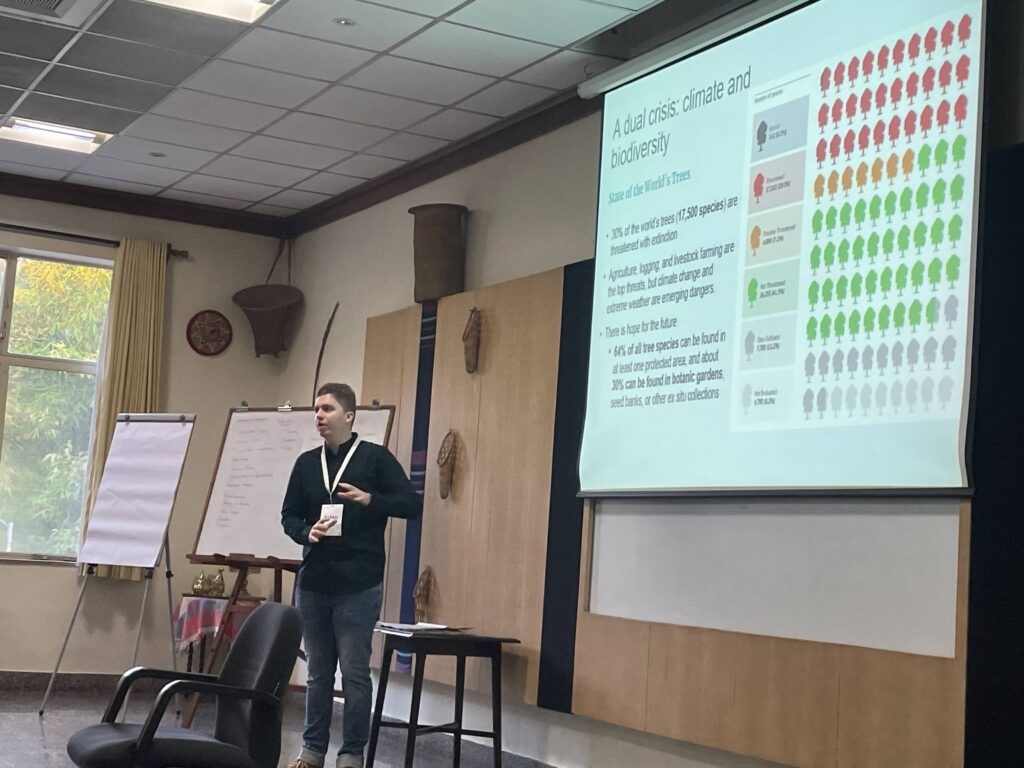
Brainstorming The Global Biodiversity Standard with the Ecological Restoration Alliance of India
By Kiran Baldwin, Auroville Botanical Gardens
This year’s edition of Restoring Natural Ecologies took place at the MRA Centre, Asia Plateau, Panchgani, Maharashtra. This is the second year of the conference, bringing together members of the Ecological Restoration Alliance of India. With over a hundred participants over, this event took place over 3 days with plenary talks, presentations, workshops, film screenings and activities. With participants from across the nation, the goals were: knowledge sharing, accelerating ecological restoration and a commitment to preserving our ecosystems.
A workshop on The Global Biodiversity Standard (TGBS) was held on day 2 and was repeated on day 3 of the event. The workshop consisted of an interactive brainstorming session with the aim of getting the group participants to come up with ideas of why such a standard is needed, how they believed a standard for biodiversity should function, what it should assess and how this could be done.
This was followed by a presentation on the current methodology and functionality of TGBS. To conclude this, there was a Q&A session as well as discussions on the practicality and uptake of TGBS into existing and new projects undertaken by members of networks such as the Ecological Restoration Alliance of India.
We were very pleased by the outcome of the workshops and received a lot of constructive feedback as well as interest from individuals and entities to participate and engage with TGBS, both during its development and once launched. We also had interest from participants to become certified TGBS Trainers, Assessors, and regional Experts – something that has followed through to the training we are currently conducting.
Calculating a climate score for Useful Native Trees
By Roeland Kindt, Senior Scientist, CIFOR-ICRAF
The GlobalUsefulNativeTrees (GlobUNT) database was developed especially to assist tree planting projects in identifying mixtures of tree species that satisfy criteria of The Global Biodiversity Standard (TGBS). The Tree Globally Observed Environmental Ranges (TreeGOER) database provides global environmental ranges of tree species and can thus be used to filter species with the environmental conditions of the planting site. A third database, also developed partially within the TGBS project and also available from Zenodo under a creative commons license as the TreeGOER, is the CitiesGOER database; it gives the baseline environmental ranges for 52,602 cities worldwide and also includes projections for different climate change scenarios and time periods. An example of how information from all these databases can be combined to calculate a ‘climate score’ that can inform selection of climate-suitable species at a selected planting site is given in the following R-pub: Using the Tree Globally Observed Environmental Ranges and CitiesGOER databases to Filter GlobalUsefulNativeTrees Species Lists.
For those that are less R-savvy, since the November 2023 version of GlobUNT, a user can also manually enter the bioclimatic conditions of the planting site. This can be done relatively easily by copying data from CitiesGOER as that database is in an MS Excel format and can be easily filtered by country.
And some news just in… The most recent version of GlobUNT (2024.03) now provides yet another option to infer the bioclimatic conditions of the planting site. The bioclimatic conditions can be set very quickly by selecting the location of a nearby weather station and the climate (baseline or from three future scenarios). Weather station bioclimatic data is available from the ClimateForecasts database, whereas GlobUNT now also provides a link to the selected weather station in Meteostat.
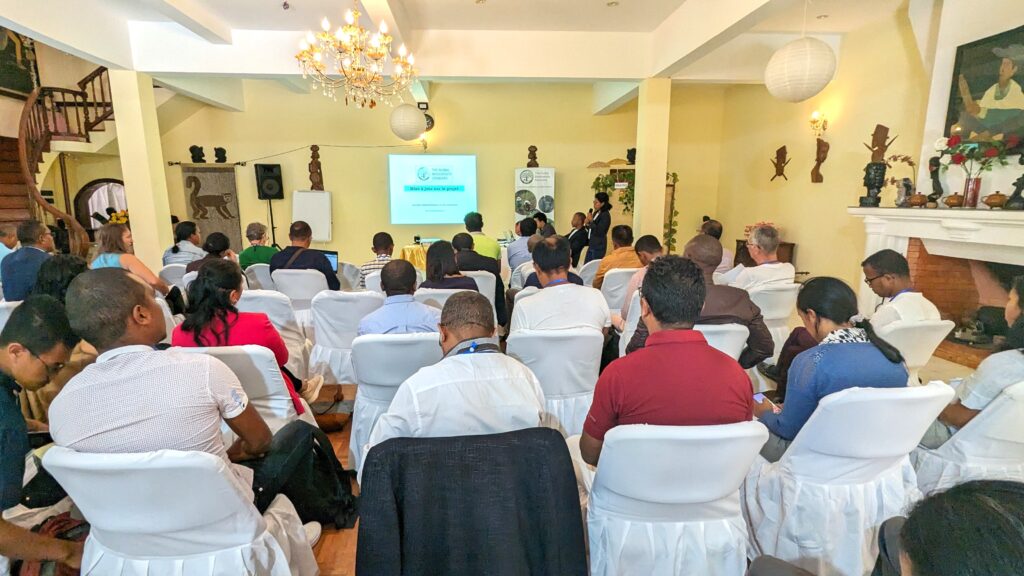
Promoting The Global Biodiversity Standard in Madagascar
By Narindra Ramahefamanana, Missouri Botanical Garden
Every year, an informal group called the Malagasy Forest Restoration Practitioner’s Network organizes a one-day event at which information is shared on all aspects of forest restoration in Madagascar and where mutually beneficial relationships can be fostered.
In 2023, the workshop was held on 8th December in Antananarivo and was attended by representatives of more than 40 institutions (some online). The opportunity of this workshop was used to inform those present of The Global Biodiversity Standard (TGBS) and to respond to their questions and note feedback. For the first time, with the development of a near final version of the manual, we were able to present TGBS processes and evaluation methods in some detail.
Our presentation was well received but naturally incited a lot of healthy debates with hot topics including: how much will certification cost and whether subsidies might be accessible to small projects; whether the use of fast-growing alien tree species planted as an alternative to timber and fuel wood from native trees would prevent a project being eligible to certification; the duration of a TGBS Certificate; the advantages of holding a certificate; and whether the Standard would accommodate projects that are compromised due to outside factors. Certainly, if the level of debate can be considered indicative then TGBS is providing not just a Standard but also an intellectual framework in which to consider restoration efforts.
